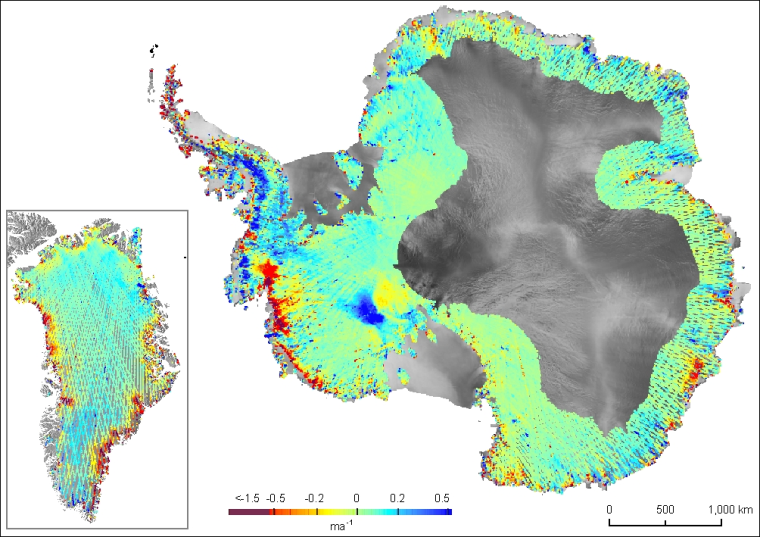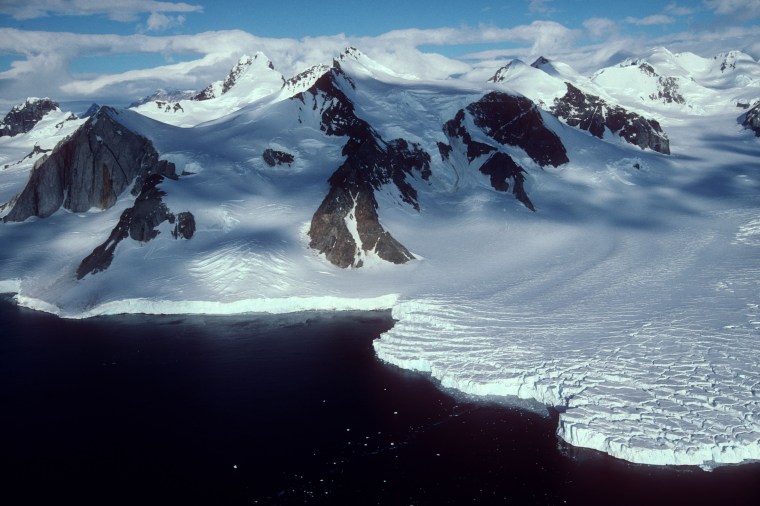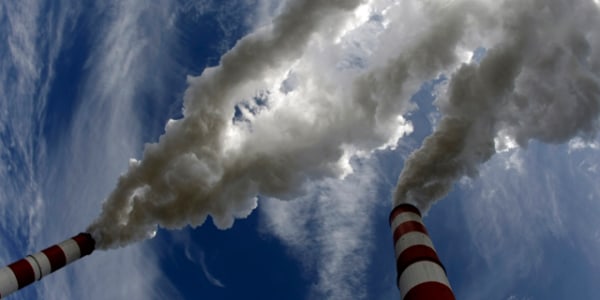The most detailed satellite information available shows that ice sheets in Greenland and western Antarctica are shrinking faster than scientists thought and in some places are already in runaway melt mode, a new study found.
"Dynamic thinning of Greenland and Antarctic ice-sheet ocean margins is more sensitive, pervasive, enduring and important than previously realized," researchers wrote in the paper published online Wednesday in the peer-reviewed journal Nature.
Using 50 million laser readings from a NASA satellite, scientists for the first time calculated changes in the height of the vulnerable but massive ice sheets and found them especially worse at their edges. That's where warmer water eats away from below. In some parts of Antarctica, ice sheets have been losing 30 feet a year in thickness since 2003, according to the study.
Some of those areas are about a mile thick, so they've still got plenty of ice to burn through. But the drop in thickness is speeding up. In parts of Antarctica, the yearly rate of thinning from 2003 to 2007 is 50 percent higher than it was from 1995 to 2003.
These new measurements confirm what some of the more pessimistic scientists thought: The melting along the crucial edges of the two major ice sheets is accelerating and is in a self-feeding loop. The more the ice melts, the more water surrounds and eats away at the remaining ice.
'Runaway effect' in places
"To some extent it's a runaway effect. The question is how far will it run?" said lead author Hamish Pritchard of the British Antarctic Survey. "It's more widespread than we previously thought."
"We were surprised to see such a strong pattern of thinning glaciers across such large areas of coastline," he added, "and in some cases thinning extends hundreds of kilometers inland."
In a statement, the British agency said the authors had found that the "dynamic thinning" of glaciers:
- now reaches all latitudes in Greenland;
- has intensified on key Antarctic coastlines;
- is penetrating far into the ice sheets’ interior;
- is spreading as ice shelves thin by ocean-driven melt.
Ice loss from many glaciers in both Antarctica and Greenland is greater than the rate of snowfall farther inland, the researchers added.
In Greenland, the research found that 81 of the 111 glaciers surveyed are thinning at an accelerating, self-feeding pace.
In Antarctica, some of the fastest thinning is on the west coast where Pine Island Glacier and the neighboring Smith and Thwaites glaciers are thinning by up to 30 feet a year.
'It is alarming'
The study doesn't answer the crucial question of how much this worsening melt will add to projections of sea level rise from man-made global warming.

Some scientists have previously estimated that steady melting of the ice sheets will add about 3 feet, maybe more, to sea levels by the end of the century. But the ice sheets are so big it would probably take hundreds of years for them to completely disappear.
As scientists watch glaciers retreat or just plain collapse, some thought the problem could slow or be temporary. The latest measurements eliminate "the most optimistic view," said Penn State University professor Richard Alley, who wasn't part of the study.
Slideshow 22 photos
Climate conditions
The key problem is not heat in the air, but the water near the edge of the ice sheets, Pritchard said. The water is not just warmer but its circulation is also adding to the melt.
"We think that warm ocean currents reaching the coast and melting the glacier front is the most likely cause of faster glacier flow," he said. "This kind of ice loss is so poorly understood that it remains the most unpredictable part of future sea level rise."
"It is alarming," said Jason Box of Ohio State University, who also wasn't part of the study.
Worsening data, including this report, keep proving "that we're underestimating" how sensitive the ice sheets are to changes, he said.

